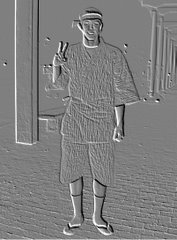According to the author of this article, Van Eck, many years of research have contributed and supported the assertion that learning with games is both effective and can save instructional time compared to traditional teaching methods. The main issues to negotiate (after having substantiated this claim) games must be a good match for instructional goals and that educational games can be either educationally effective and not fun, or fun and ineffective in teaching students target content or skills. The main benefit, if we can find appropriate and engaging games, is that all learning takes place within a context that is meaningful to the game. This contextual learning is referred to as “situated cognition” and is widely recognized as beneficial to learning. Games that are good tend to require a “constant cycle of hypothesis, formulation (of ideas), testing, and revision.” Games that are not challenging enough bore and those that are too difficult can frustrate our students. Choosing a suitable game can be very difficult, but many games, even if they present inaccurate or incomplete information on a topic, can be useful, especially to well prepared teachers. These teachers are ready to explore issues in depth and offer extensions that are relevant to the context of the game in order to further learning. Van Eck offers a number of possible extension tools for in-game content: Spreadsheets, diaries, reports, letters, experiments, and so on.
For my future classroom, I am interested in the prospect of using games to teach skills and content. I could see many games as applicable to foreign language (Spanish/Japanese/ESL) learning goals. The simplest step would be to use a commercial off-the-shelf game in the target language. Some popular titles are available in other languages as they become popular. This is especially true for games with Japanese, as many of them originate in Japan. I would want to be careful to censor games that include violence, harsh language, or other inappropriate themes. Upon briefly viewing the recommended socialimpactgames.com I found "The English Taxi" for my future ESL students. I will continue to look into these resources, because well-constructed games that are relevant to my teaching have a great potential to engage my learners and save me time.
Van Eck, R. (2006). Digital Game-Based Learning: It’s Not Just the Digital Natives Who Are Restless. EDUCASE, 41, 17-18, 20, 22, 24, 26, 28, 30.


